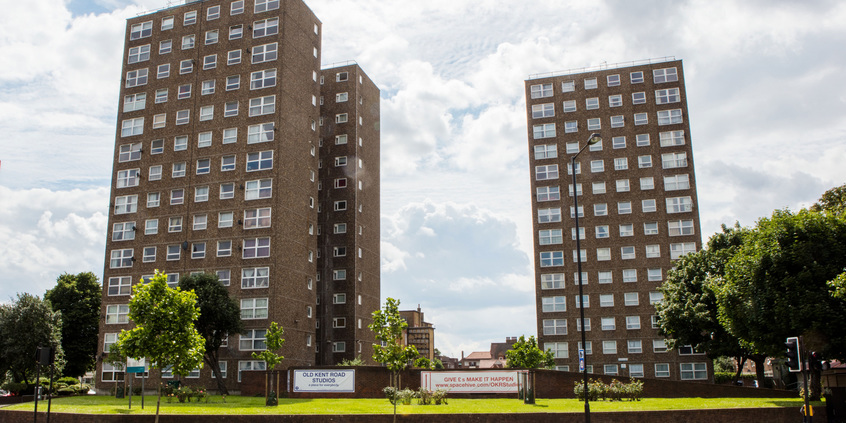Residents of four tower blocks in a south London council estate have had their gas switched off and will be asked to move out temporarily after an investigation by consulting engineer Arup revealed that their homes may not be able to withstand a gas explosion.
The flats in the Ledbury Estate, Peckham, had their gas cut off yesterday (10 August). Southwark council, the owner of the estate, said it was aware that the move was inconvenient, but that it was not willing to take any risks.
The council had previously said it expected residents to remain in their homes while strengthening work was carried out on the blocks.
I cannot describe my level of anger at Southwark council. Not only is the gas supply illegal, but the structure of the building is potentially unsafe. It’s a miracle no one was killed over this time– Ledbury Estate resident
In the meantime, they would be offered hotplates so they could prepare meals and could use shower facilities at any of Southwark’s leisure centres. Those measure will still go ahead, but it has now been decided to decant residents “over the coming weeks and months” while works are carried out.
The estate consists of four 13-storey towers. Arup was called in to investigate the propagation of cracks in them after residents expressed fears that they were so large that a fire could spread through them, potentially repeating the Grenfell tragedy.
High-rise housing in the UK was strengthened following the partial collapse of the Ronan Point block in the east London borough of Newham in 1968 – the year that the Ledbury estate was completed. In that incident, four people died after a gas explosion blew out some supporting walls. Ronan Point and Ledbury were both built using what was then regarded as a modern method of construction: large concrete panels bolted to a frame.

The tower blocks were completed in 1968 (GLA)
Stephanie Cryan, deputy leader of Southwark council, said despite records suggesting the blocks were strengthened following Ronan Point, this may not have happened. She said: “Arup’s structural investigations suggest this strengthening may not have occurred, and we have therefore turned off the gas until further investigations can be done.
“We are doing all we can to provide residents with alternatives while the gas is turned off, and are working up a plan to permanently replace the gas with electric ovens and boilers as part of the wider works, should that be necessary.”
One resident told the Guardian newspaper: “I cannot describe my level of anger at Southwark council. Not only is the gas supply illegal, but the structure of the building is potentially unsafe. It’s a miracle no one was killed over this time.”
Tenants who are considering leaving have been offered £5,800 in compensation for “stress and disruption” and have been promised a place at the front of the queue for alternative accommodation.
Top image: The tower block were completed in 1968 (GLA)
Further Reading:
Comments
Comments are closed.







Comment
I do wish the writers of the articles in this and other technical journals would check their facts. It is this sort of misleading commentary that discredits the profession, and causes those who do know to mistrust anything that is reported. Generally, I just ignore it all but enough is enough!
Ronan Point most certainly did not comprise “large concrete panels bolted to a frame”. It was a Large Panel System structure. The distinction is important: there are many blocks that do incorporate concrete panels fixed to a frame and, superficially, they can appear very similar to LPS blocks. But LPS construction does not rely on a frame of any sort – the panels themselves provide the structure as well as the internal and external enclosures, each panel giving vertical and lateral support to its neighbouring panels.
However, this article is correct insofar as the Ronan Point explosion did indeed displace some panels It was the loss of several upper storey panels that deprived adjacent panels of support and resulted in the collapse of a corner of the block. This incident led to the BRE investigations that recommended all LPS high rise dwellings should be reviewed to ensure they were adequate to accommodate the pressure generated by a gas explosion. Some blocks were found to be adequate and some not. Strengthening was required only in those blocks that failed the review.
Where did the word ‘propagation’ come from in the context of cracks? Creative journalism again. Which means you are making quite a lot of this up and trying to instill fear. The hands in the photographs are in gaps between concrete panels within a dwelling. Are these between dwellings or between rooms? I suspect rooms. They have not ‘propagated’! Its just construction joint!
..£5000 seems very little for no guarantee of rehousing